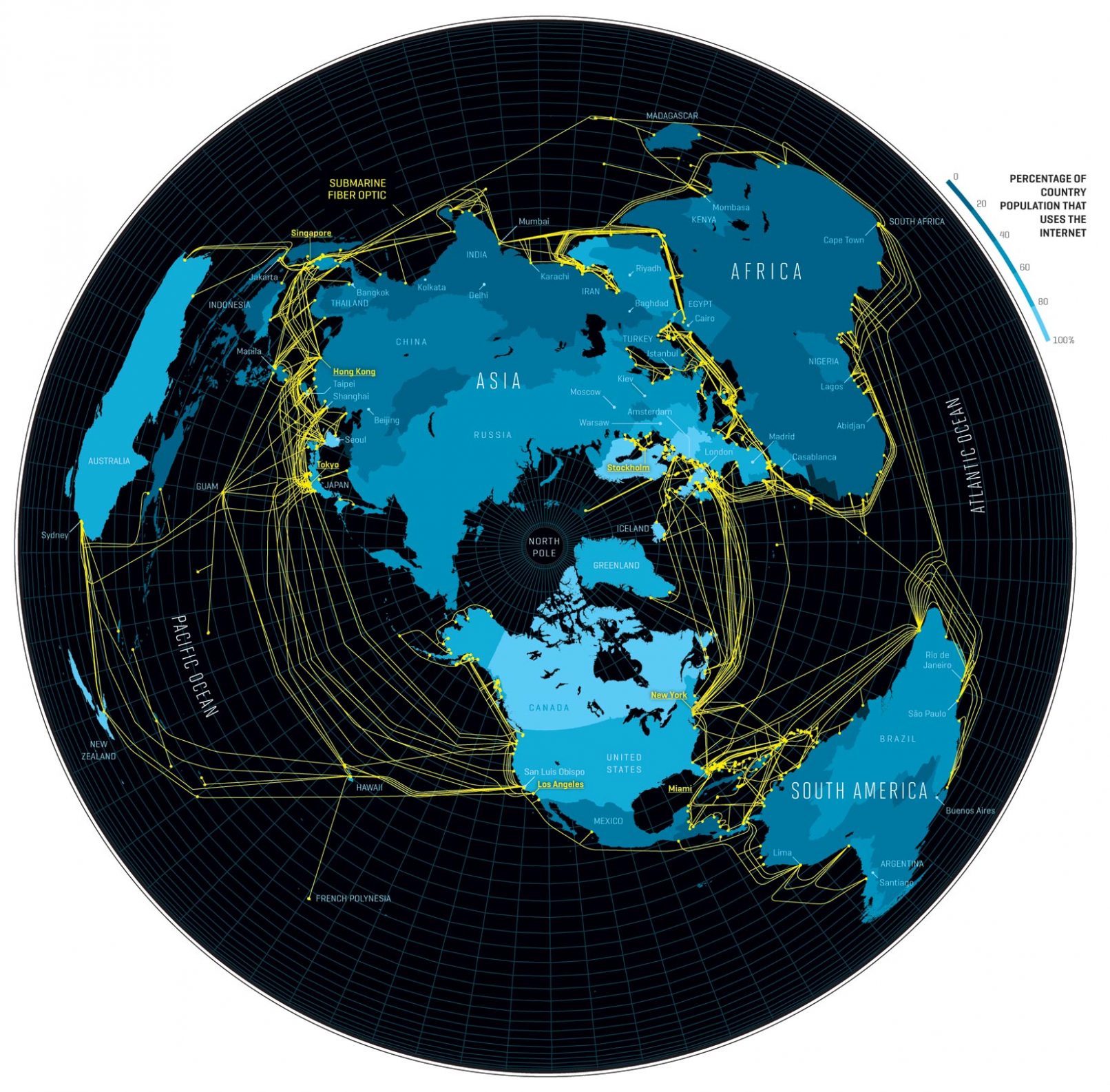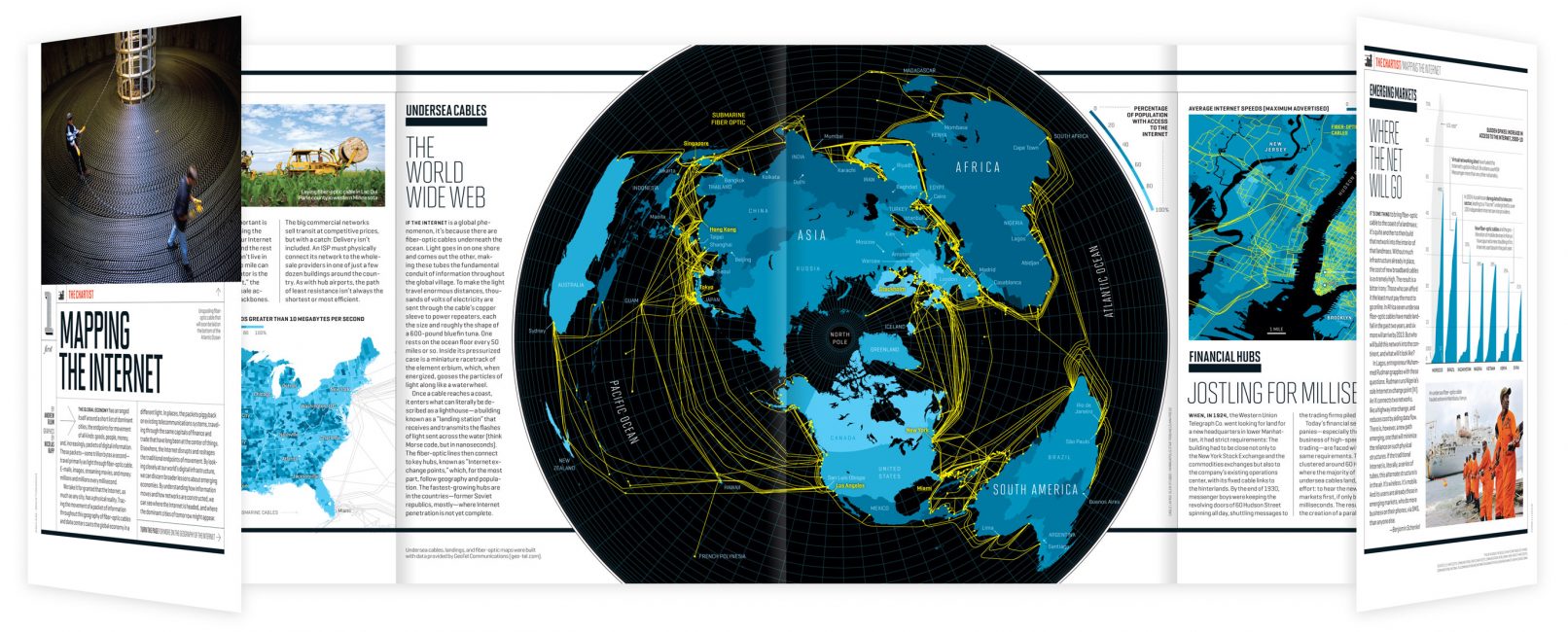Mapping the Internet
If the internet is a global phenomenon, it’s because there are fiber-optic cables underneath the ocean. Light goes in on one shore and comes out the other, making these tubes the fundamental conduit of information throughout the global village. To make the light travel enormous distances, thousands of volts of electricity are sent through the cable’s copper sleeve to power repeaters, each the size and roughly the shape of a 600-pound bluefin tuna.Once a cable reaches a coast, it enters a building known as a “landing station” that receives and transmits the flashes of light sent across the water. The fiber-optic lines then connect to key hubs, known as “Internet exchange points,” which, for the most part, follow geography and population.

